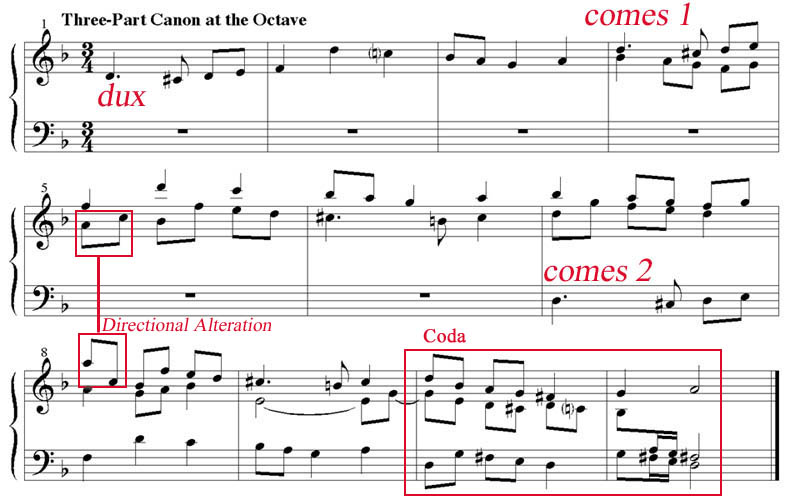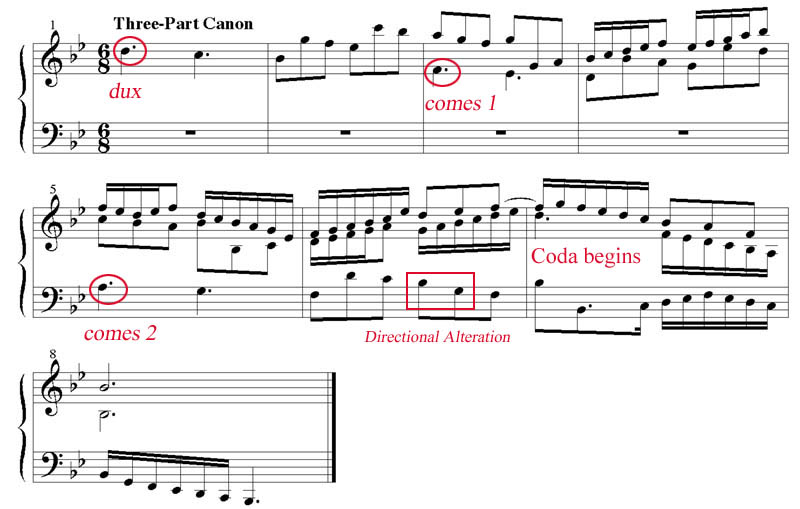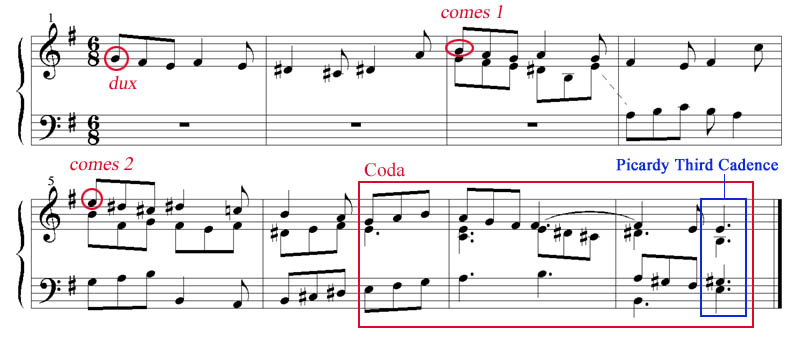A. Simple three-part canon at the octave
1. In a three-part canon, the composer must contend with two comes voices. So although the method of first creating the dux and then simply copying out the appropriate music in the following part, this must now be done twice. This also gives the composer additional choices regarding the order of the entries and in which voices the comes will occur. In this example, we have chosen to introduce the dux in the alto, followed by the comes 1 in the bass and the comes 2 in the soprano.
2. Similarly, when we compose a new contrapuntal line in the dux to complement the comes 1, it must be copied to the comes 1 to complement the comes 2.

3. Finally, we must compose a new dux line that both supports the overall harmonic implications and complements the two comes voices yet maintains a melodic integrity of its own. Don't be surprised if this task seems to be the most difficult part of the composition. It is wise to remember that a strong melody doesn't presuppose linear activity only - as we see in this example, the dux is comprised mostly of leaps in bar three, however it avoids sounding like an accompaniment and reveals a distinct and independent melodic profile of is own.
mp3 download (woodwind trio arrangement)

4. The following example is an additional illustration of a simple three-part canon. Of special interest here was the compositional choice to change the direction of one the leaps while maintaining integrity in terms of pitch. Although this was done to accommodate the two hands of a keyboardist (for which this piece was initially conceived), it also serves to keep the ranges of the constituent voices closer so that the counterpoint can be heard more properly. As well, a Coda is added to prolong the cadence region - note that the independence of the voices is compromised here to create for the listener a clear sign that the conclusion of the piece has arrived.
mp3 download (woodwind trio arrangement)








